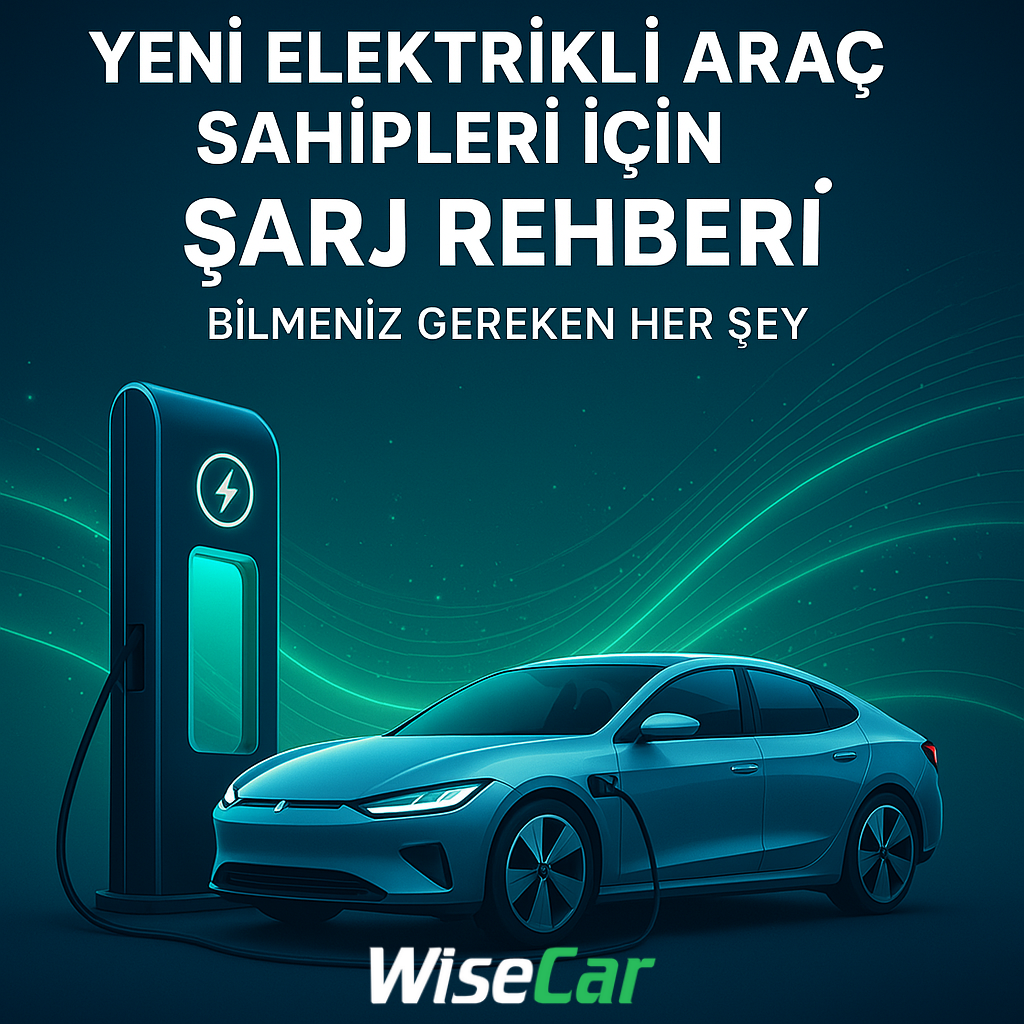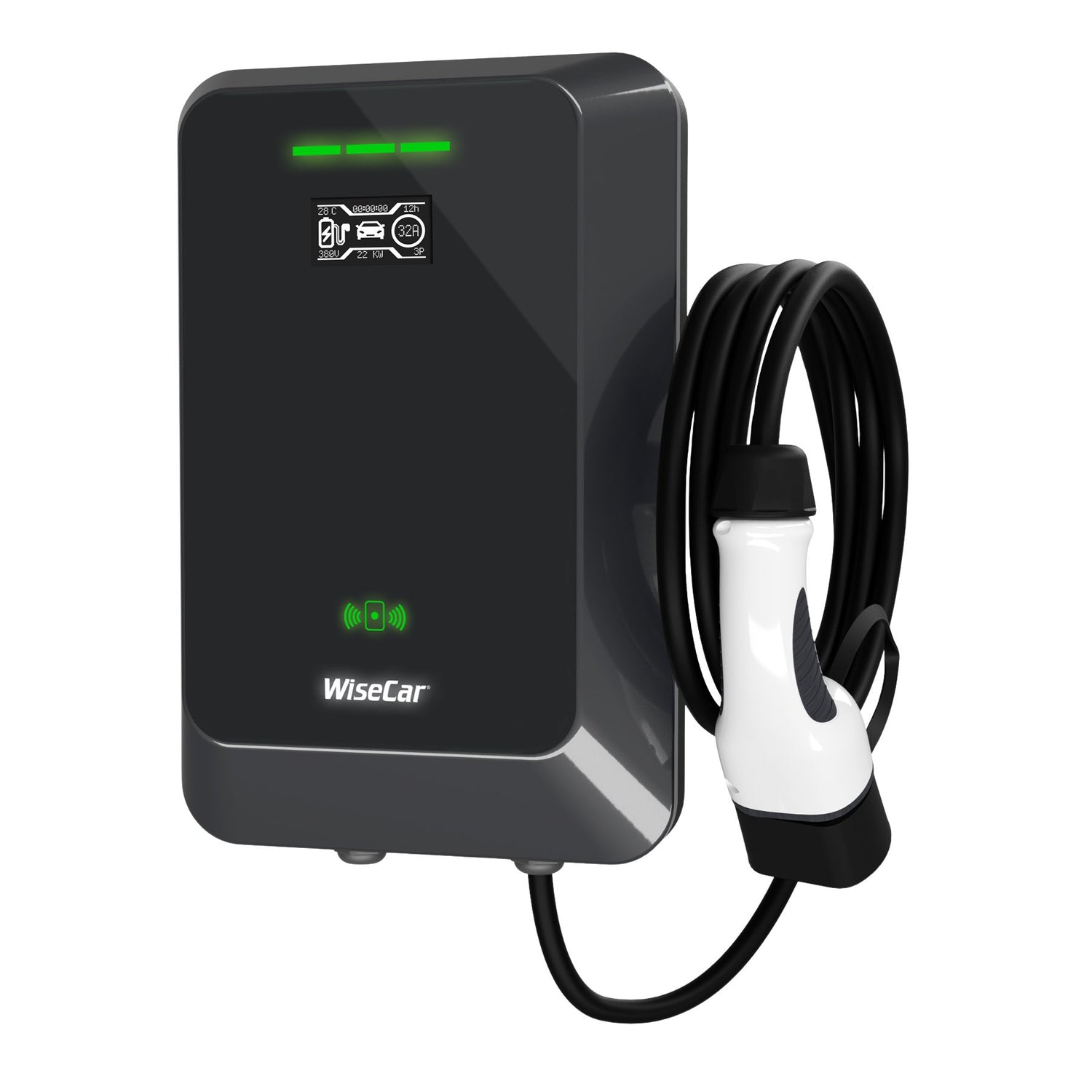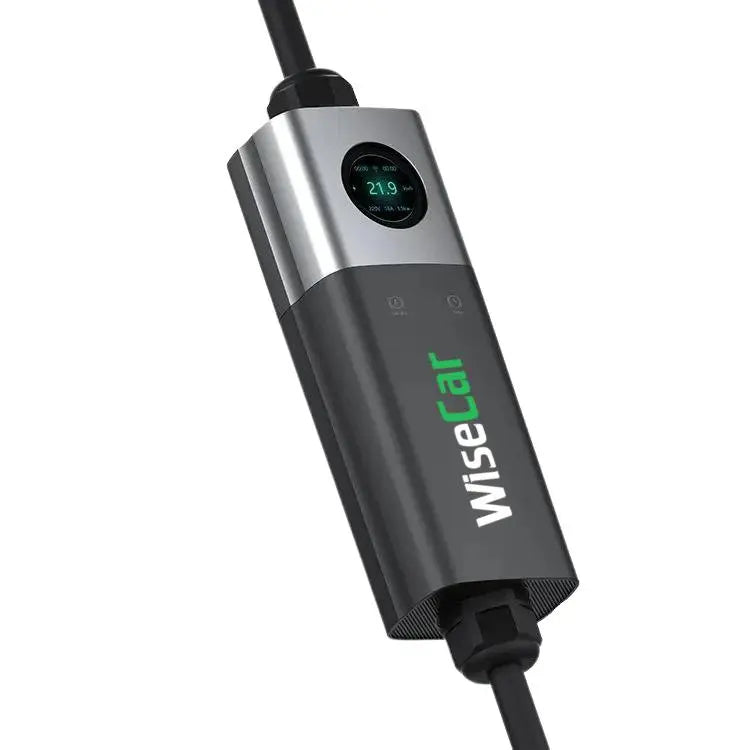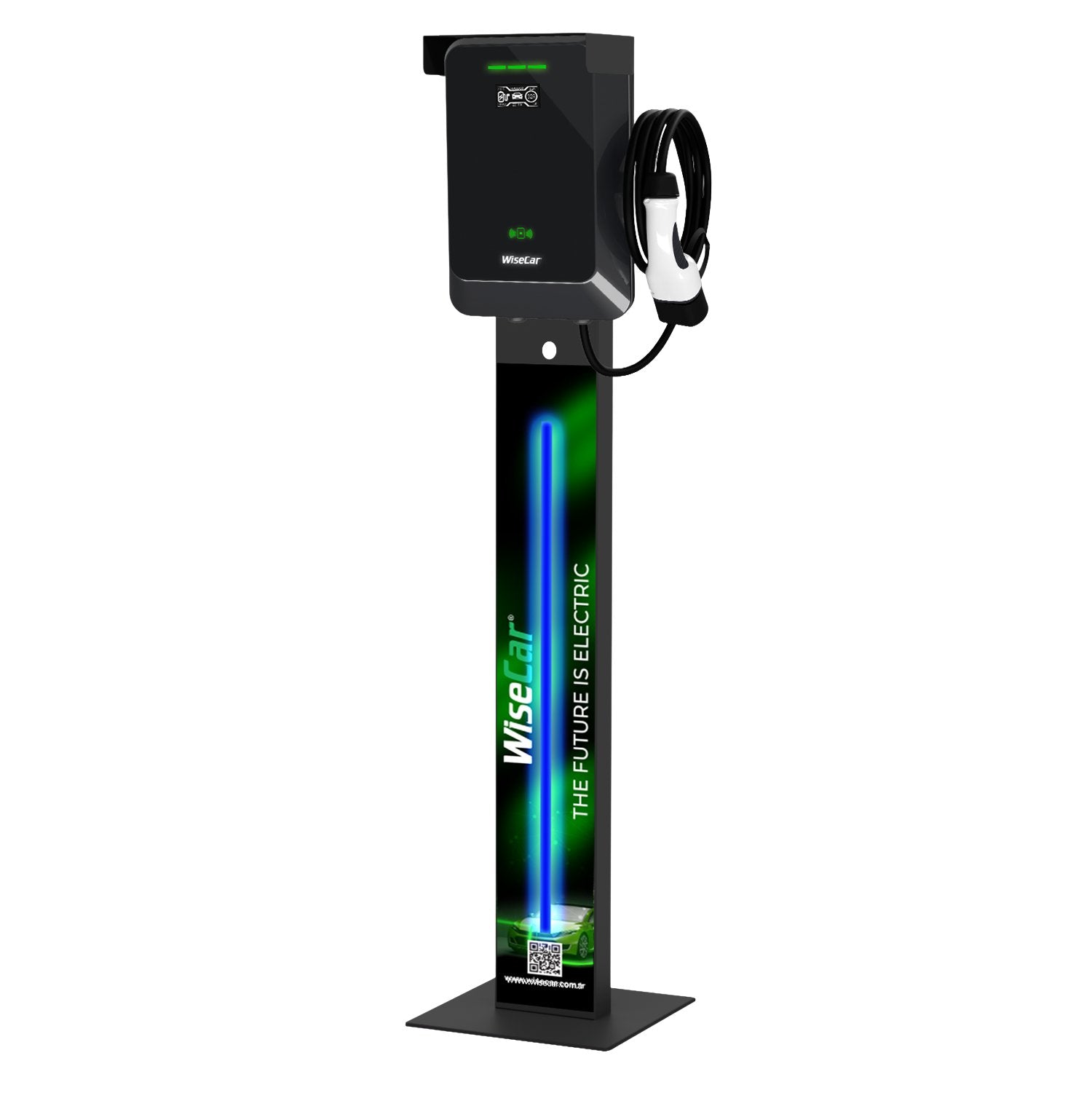
Charging Guide for New Electric Vehicle Owners: Everything You Need to Know
Owning an electric vehicle (EV) is a great way to make the eco-friendly choice and save on fuel costs. However, if you’re a new EV owner, the charging process can seem a bit complicated at first. Questions like “Which charger should I use?”, “How long does it take to charge?”, “How to charge at home?” may be on your mind. Don’t worry! In this guide, we’ll explain step by step everything new EV owners need to know about the charging process. You’ll also discover how Wisecar’s user-friendly chargers make a difference in the process.
1. Electric Vehicle Charging Basics: What Are AC and DC Charging?
Electric vehicle charging falls into two main categories: AC (Alternating Current) and DC (Direct Current) . Understanding this difference will help you choose the right charger.
- AC Charging : This is the type of charging typically used at home or at work. It provides a slower charge, but is ideal for everyday use. For example, the Wisecar WT3 22kW Wall Charger is a great option for AC charging and can charge a Tesla Model 3 from 20% to 80% in about 2 hours.
- DC Charging : Used at fast charging stations and is usually preferred on long journeys. DC charging charges the battery much faster, but these stations are less common and not practical for home use.
Tip : As a new EV owner, you can focus on AC chargers for your daily charging needs. Wisecar's portable and wall chargers have you covered for all your AC charging needs.
2. Charging Levels: Which Speed Is Right For You?
Electric vehicle chargers offer charging at different speeds. These speeds are classified as “levels”:
- Level 1 : Refers to charging with a standard home socket (220V). It is very slow and is generally suitable for emergencies.
- Level 2 : Requires a more powerful charger (e.g. 11 - 22 kW). Wisecar's WTP3 and WT3 (22 kW) models fall into this category. Level 2 charging can add 30-100 km of range per hour and is ideal for home use.
- Level 3 : DC fast charging stations. They provide power of 50 kW and above and are usually found at public charging stations.
Wisecar Recommendation : For home charging, you can choose the Wisecar WTP3 22 kW model. This device offers fast and safe Level 2 charging, so you can easily charge your car overnight.
3. Charging at Home: Easy and Safe with Wisecar
Home charging is the most common and economical method for electric vehicle owners. Here’s what you need to know about charging at home:
- Choose the Right Charger : Wisecar's wall chargers (e.g. WTP3) are ideal for home use. With their compact design and 22 kW power, they provide both fast and safe charging.
- Installation Process : It is recommended that you get support from an electrician when installing your charger. Wisecar WT3 comes with a detailed user manual for easy installation. In addition, the device can be used safely outdoors thanks to its IP65 certification.
- Schedule : Save money by charging at night when electricity prices are lower. Wisecar’s smart chargers can automatically adjust charging schedules.
Example : A Togg T10X user can save an average of 150 TL per month by charging their battery between 22:00 and 06:00 at night with Wisecar WTP3.
4. Charging on the Go: Portable Solutions and Charging Stations
Planning for charging on long journeys is an important topic for new EV owners. Here are some tips for charging on the road:
- Portable Chargers : The Wisecar WTP3 22 kW Portable Charger is the perfect solution for charging on the road. Thanks to its compact design, you can easily carry it in your trunk and charge it with a standard socket.
- Charging Station Network : Charging station networks such as Eşarj, Zorlu Enerji and Sharz.net are growing rapidly in Turkey. Wisecar chargers offer cables and connectors compatible with these stations.
- Planning Tools : You can use apps like PlugShare or ChargeMap to find charging stations. Additionally, the “Charge Map” feature on Wisecar’s website shows you the closest stations.
Tip : Before you go on a long journey, don't forget to take Wisecar WTP3 with you. This way, you can charge it with a standard socket even if you can't find a charging station.
5. Maintaining Battery Health: Good Charging Habits
Electric vehicle batteries last longer with proper charging habits. Here are ways to maintain battery health:
- 20%-80% Rule : Charge your battery usually between 20% and 80%. A completely discharged or fully charged battery can reduce battery life in the long run.
- Avoid Overcharging : Wisecar chargers protect your battery with overcharging protection. For example, the WT3 model automatically stops charging when it's complete.
- Temperature Control : Charging in very hot or very cold weather can damage the battery. Wisecar devices provide safe charging with temperature sensors.
Wisecar Difference : Wisecar chargers are equipped with battery-friendly technologies. Thanks to smart charging management, you can extend the life of your battery.
6. Frequently Asked Questions (FAQ)
Let's answer the most frequently asked questions by new EV owners:
-
How long does charging take?
This depends on the power of your charger and the battery capacity of your vehicle. For example, with Wisecar WTP3 (22 kW), a Togg T10X's battery will charge from 20% to 80% in approximately 2.5 hours. -
Is charging at home safe?
Yes, Wisecar chargers have safety certifications (e.g. CE, IP65) and are equipped with features such as overcurrent and short circuit protection. -
Which cable should I use?
Wisecar chargers are compatible with Type 2 connectors and will work with most electric vehicles. Check the connector type specified in your vehicle's user manual.
Conclusion
Charging an electric vehicle may seem complicated at first, but with the right knowledge and equipment, it’s easy. At Wisecar, we offer a wide range of products to give new EV owners the best charging experience. Whether you choose the Wisecar WT3 for charging at home or the WTP3 for on-the-road use, we’ve got you covered.
What was the most difficult part of the charging process for you? Share your experiences in the comments and help your friends take a step into the world of electric vehicles by sharing this article with them!










